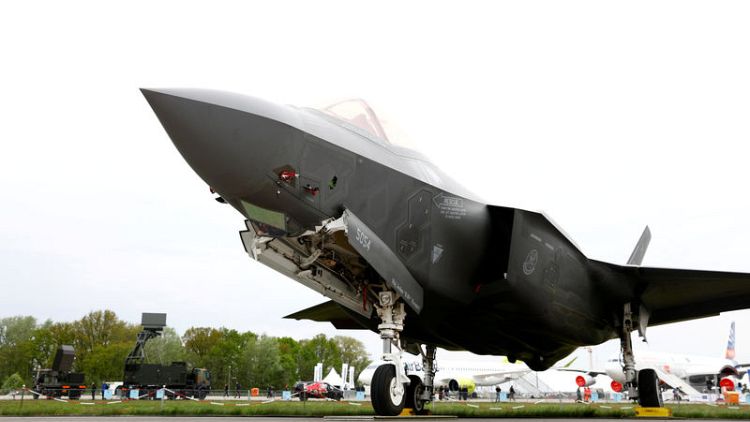BERLIN (Reuters) - The top U.S. Air Force general in Europe on Wednesday said it was critical to ensure any future British fighter jet was compatible with the U.S. F-35 stealth fighter built by Lockheed Martin for a number of U.S. allies, including Britain.
General Tod Wolters, commander of U.S. and NATO air forces in Europe, told reporters on a teleconference that he had watched Britain's unveiling of a new fighter jet development effort electronically from afar, but had not spoken with UK officials specifically about the new combat aircraft programme.
UK officials launched the new Tempest fighter jet programme last week at the Farnborough Airshow outside London.
Wolters said officials from both countries had discussed future combat air capabilities in the past, and agreed on the need to ensure any new systems could work with existing weapons.
"One of the key ingredients that has to go into any future systems is to make sure that it's interoperable with existing systems and certainly the systems that UK is embracing," he said, referring to Britain's growing fleet of F-35 fighter jets.
"As the UK decides to go forward with a system that could be called Tempest, we would hope that it would be as interoperable as possible with the great system that they've just acquired ... the F-35B," he said.
CERTAIN
He said he was certain that Britain was looking very closely at the issue, which he called "critical".
Britain has said it is looking for international partners for the new development programme, and is already in discussions with Sweden, Japan and other countries. Wolters sidestepped a question on whether the United States could also play a role.
He did announce plans to bring U.S. radar-evading, or fifth-generation, aircraft to Europe in the coming months to continue efforts to integrate those capabilities with fifth-generation aircraft operated by allies, and with older fourth-generation weapons in Europe.
He declined to provide details on whether the F-35 or F-22, both radar-evading aircraft, would be brought to Europe, or when.
The deployment would also help U.S. and allied officials hone planning for potential future wars, including the ability to detect enemy strikes, and to command and control military forces, he said.
Military sources said the deployment could mirror one launched in April 2017, when eight U.S. Air Force F-35A aircraft were sent to RAF Lakenheath, followed by smaller training missions to Estonia and Romania.
(Reporting by Andrea Shalal; Editing by Andrew Bolton)



